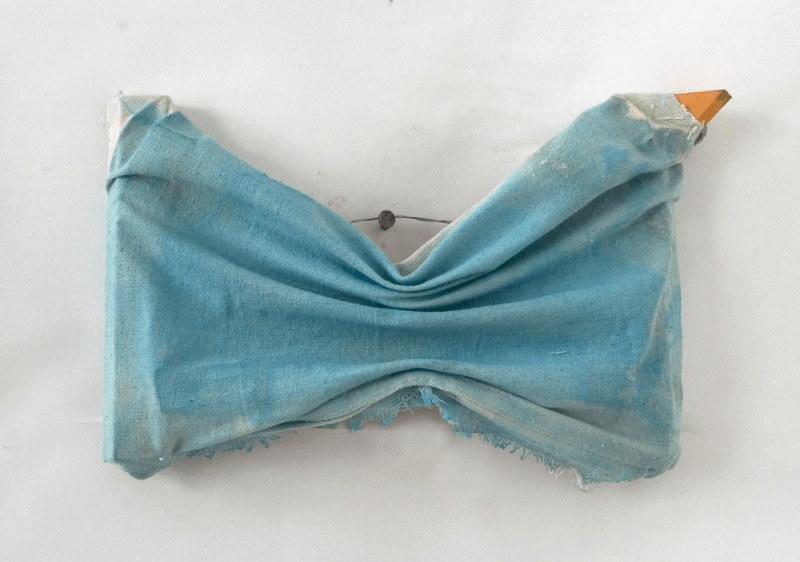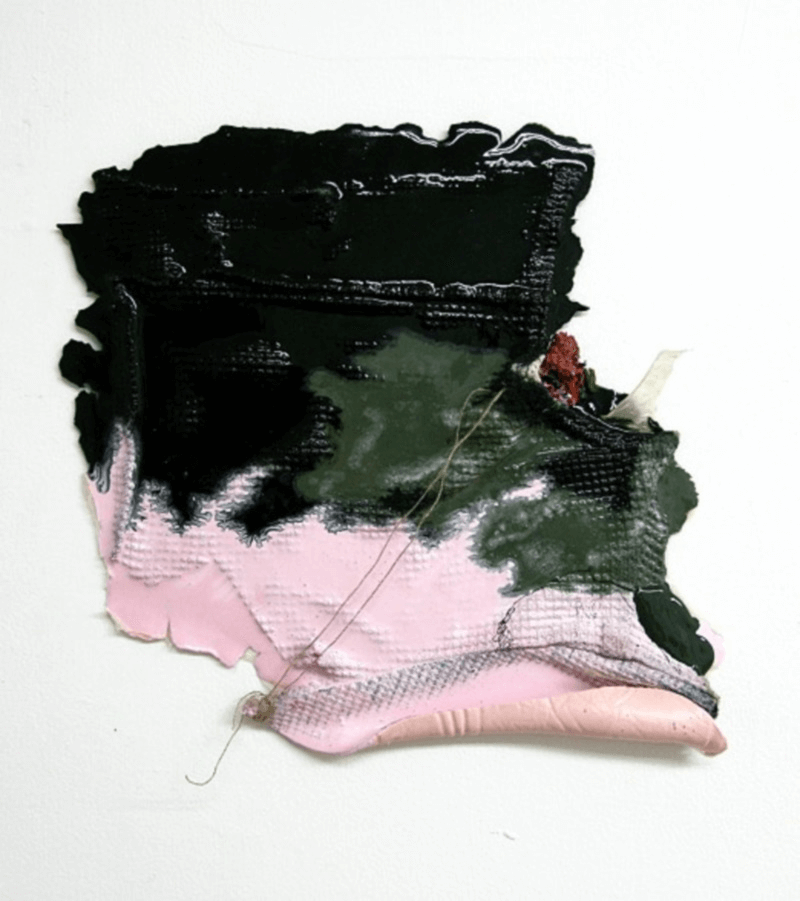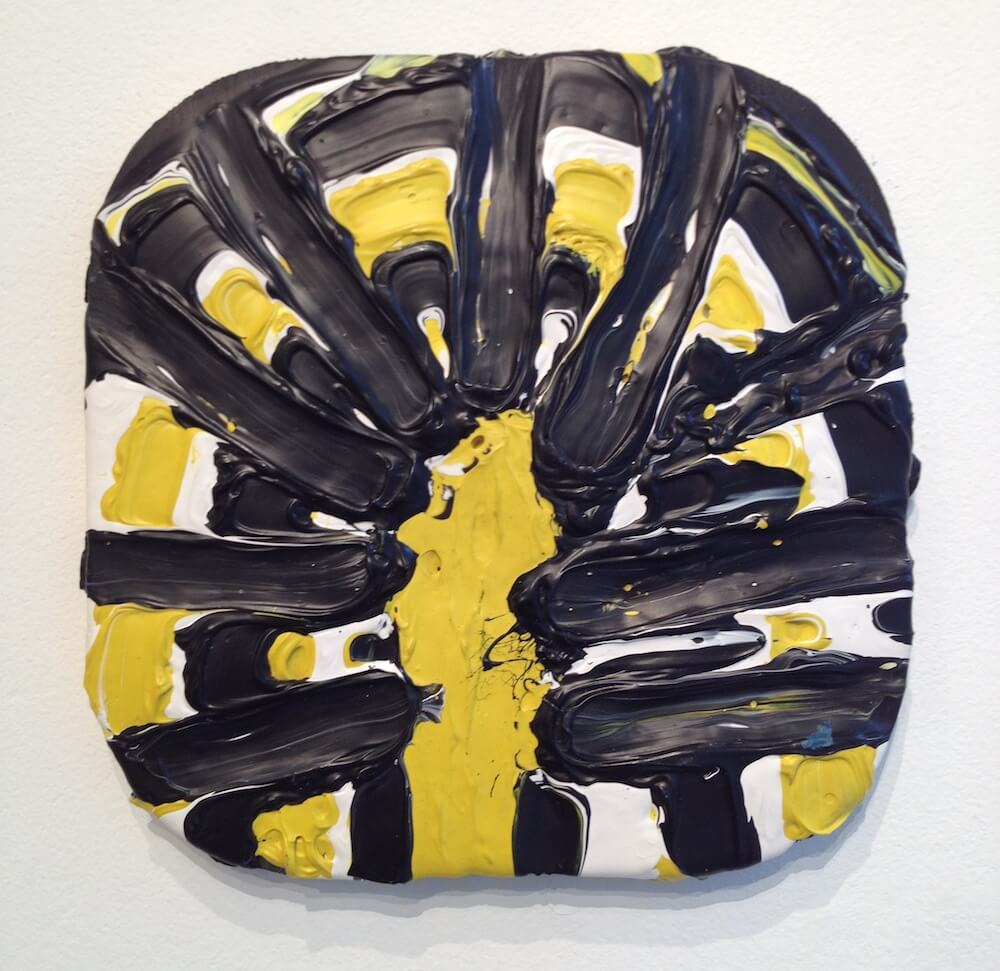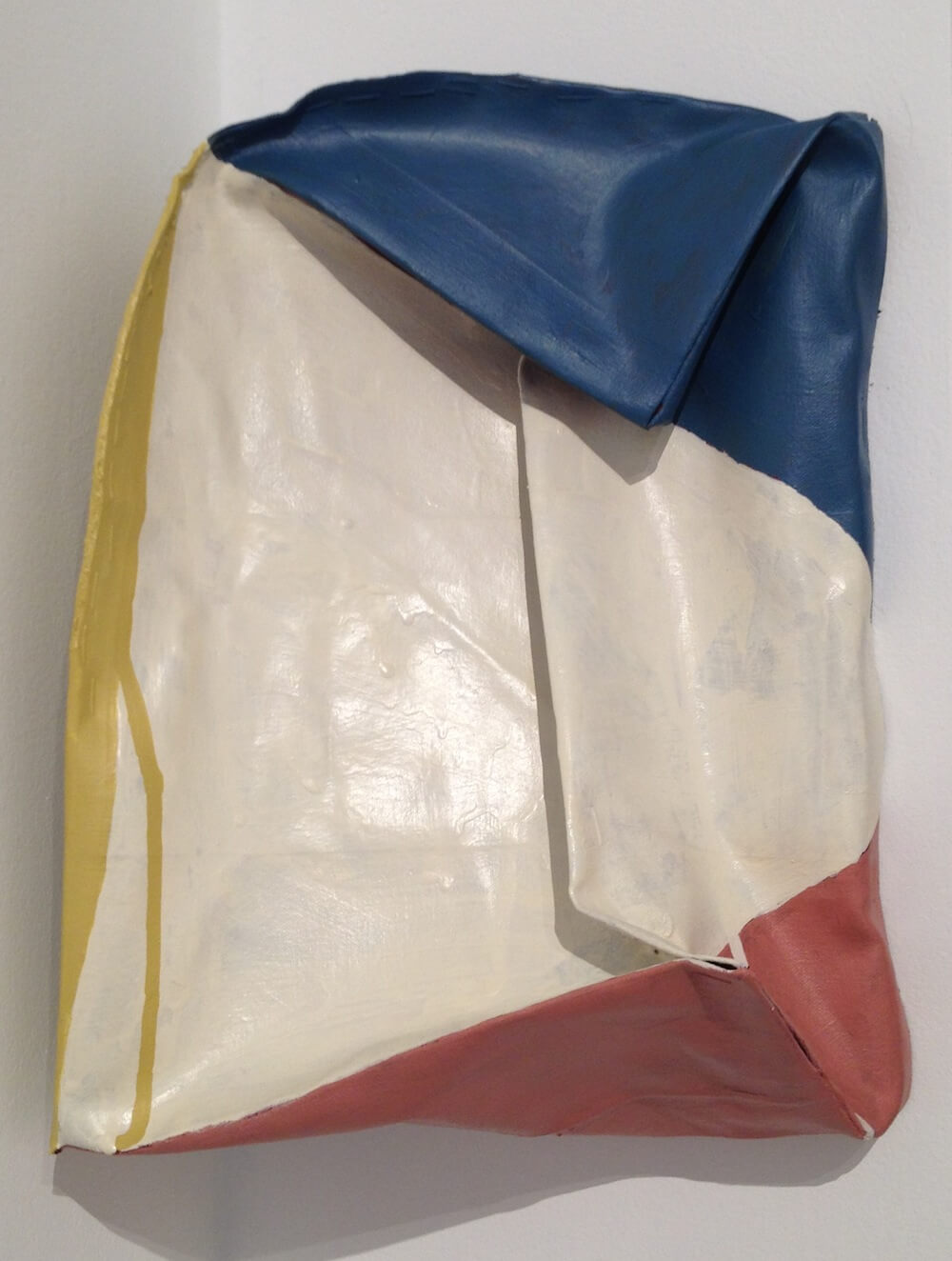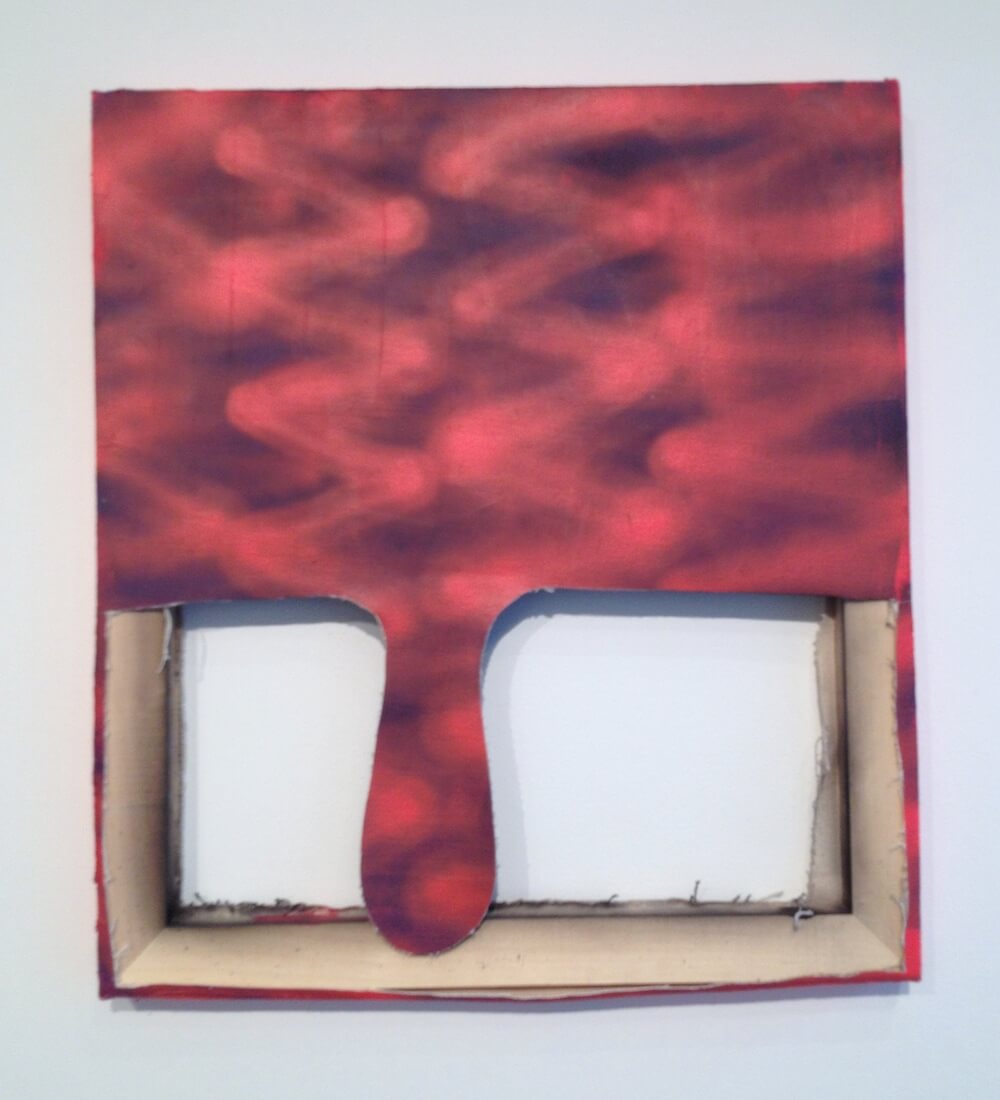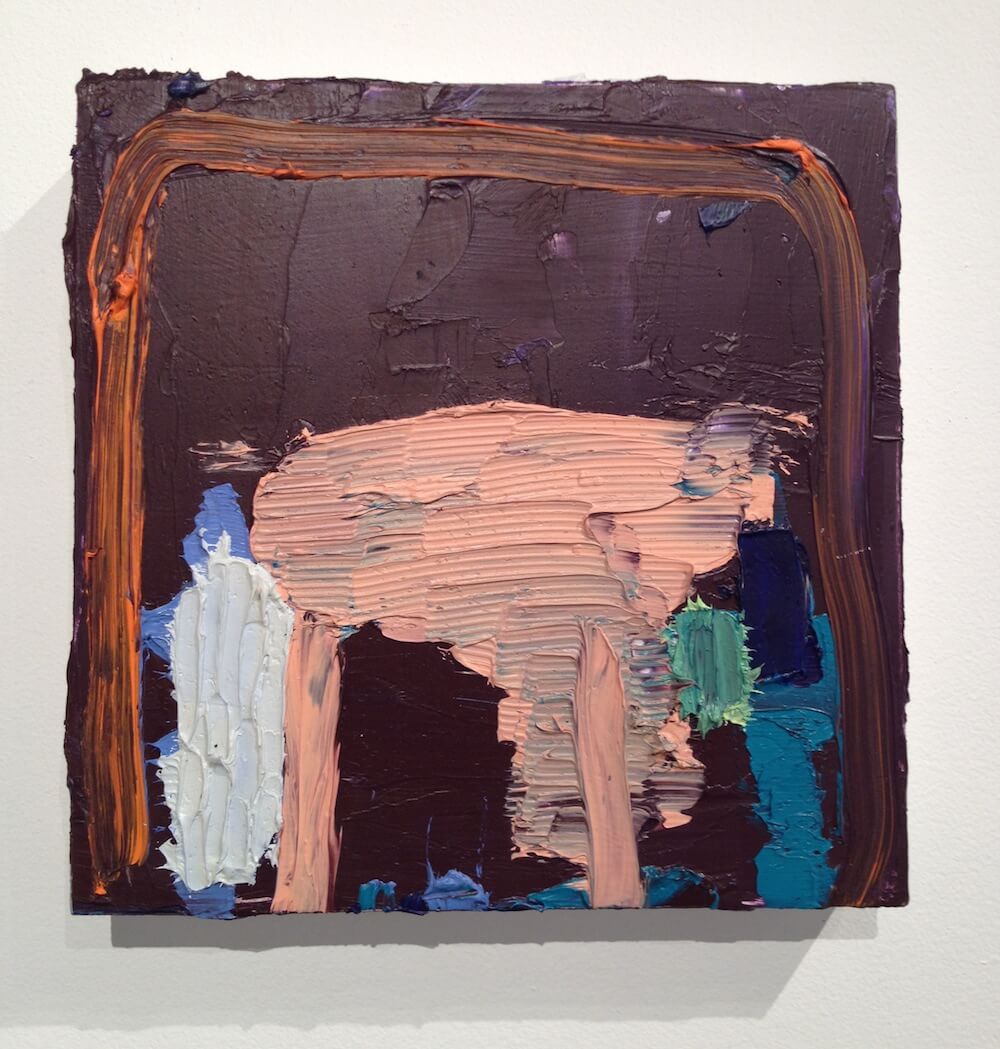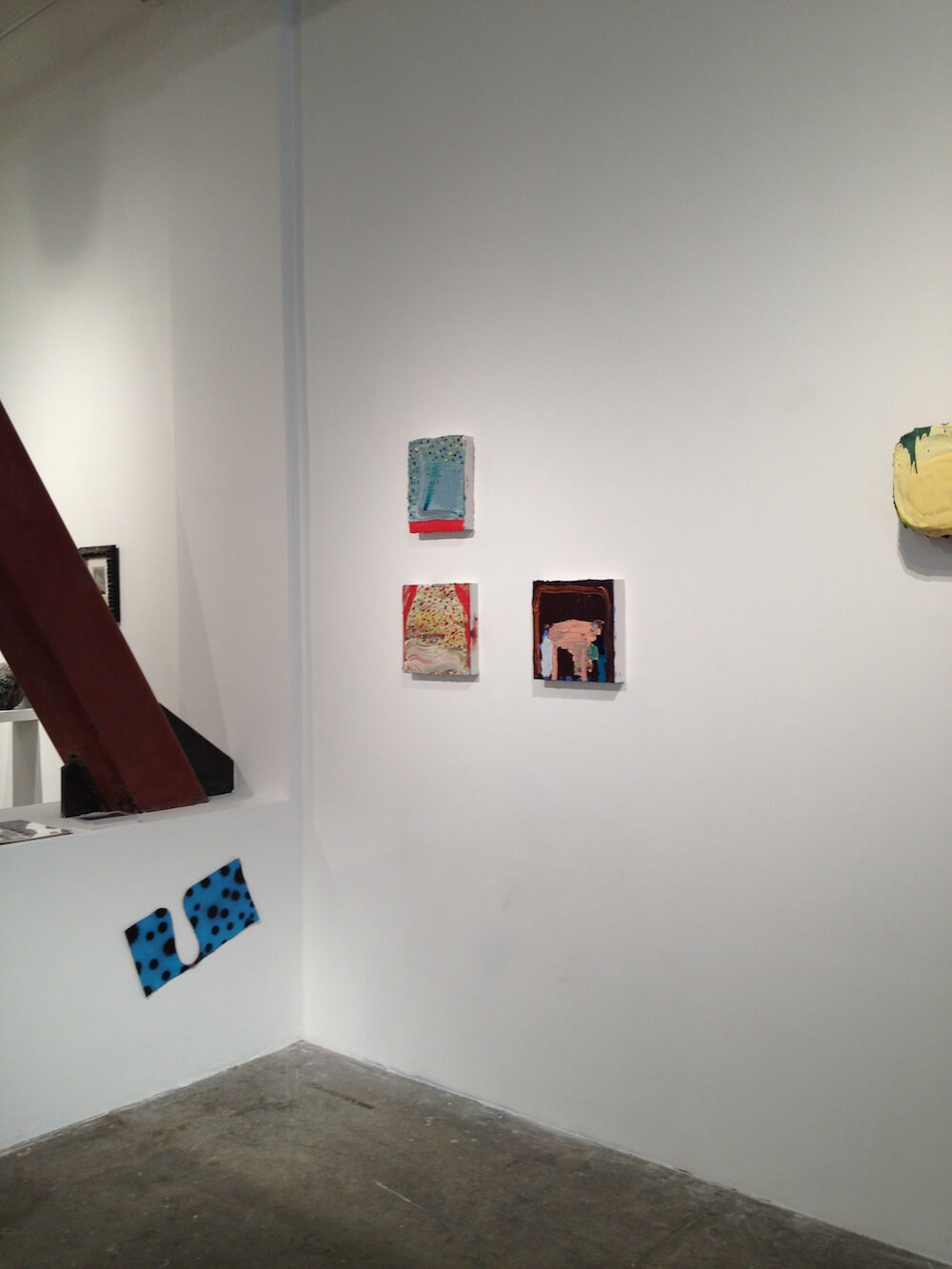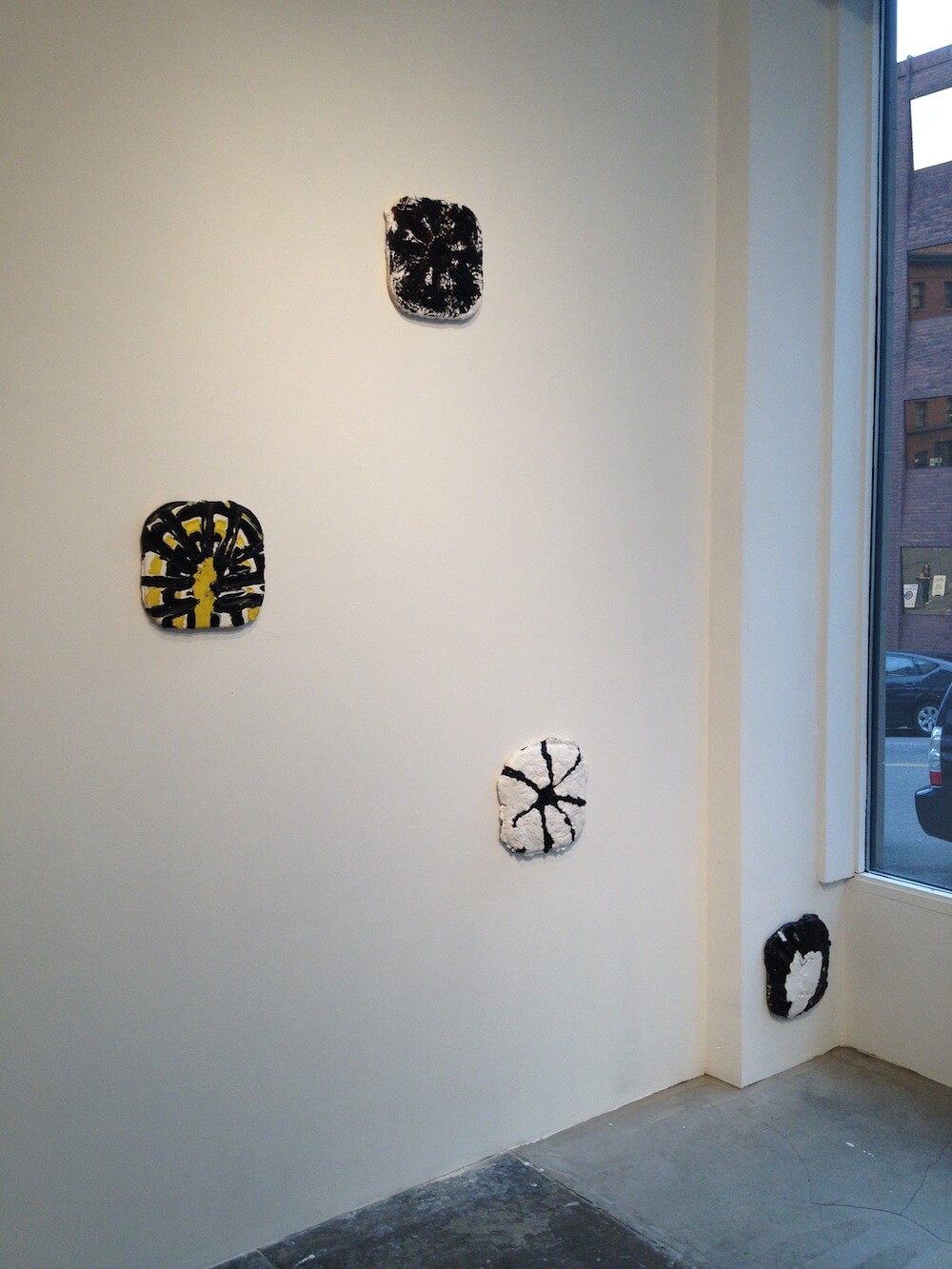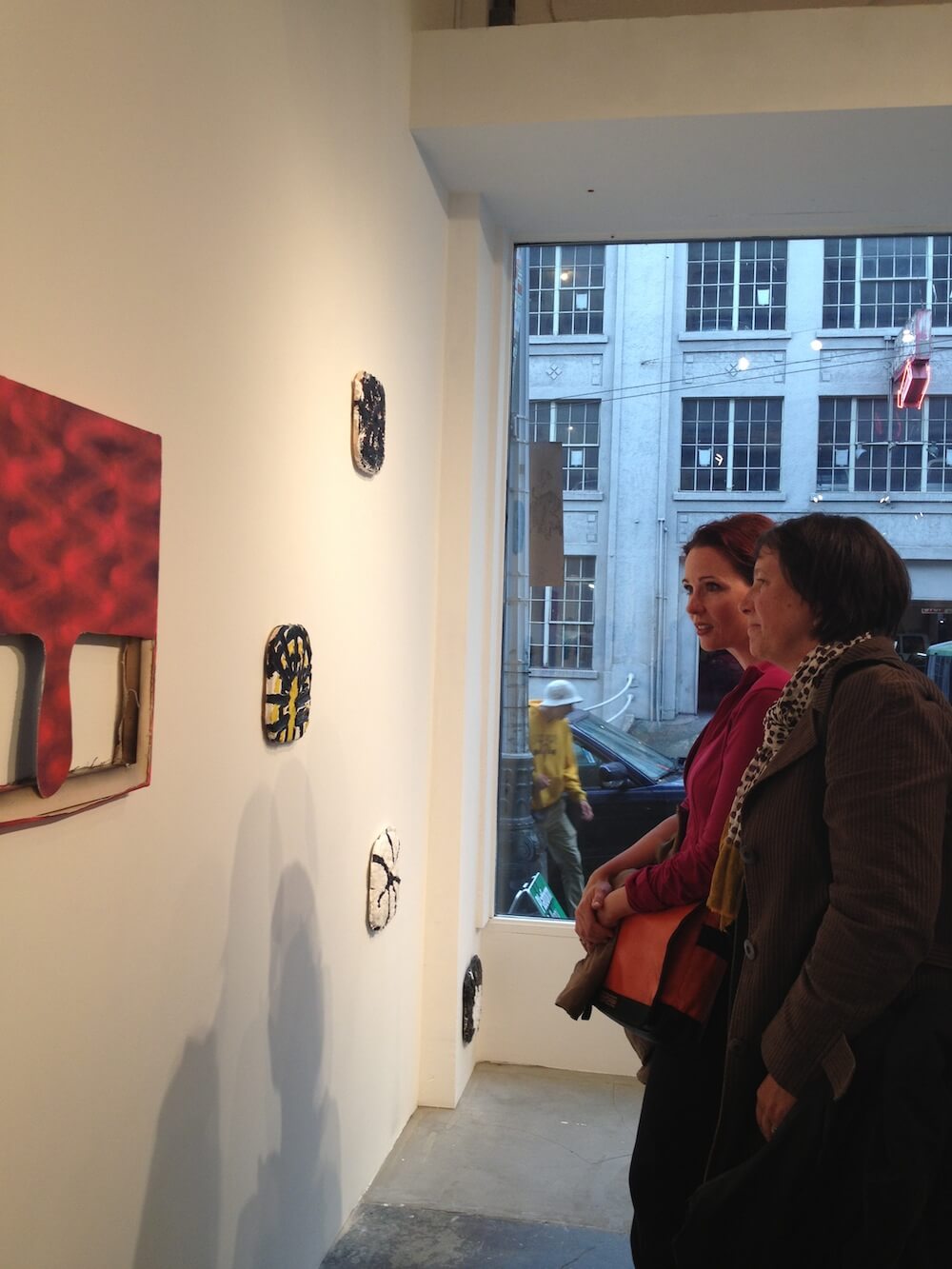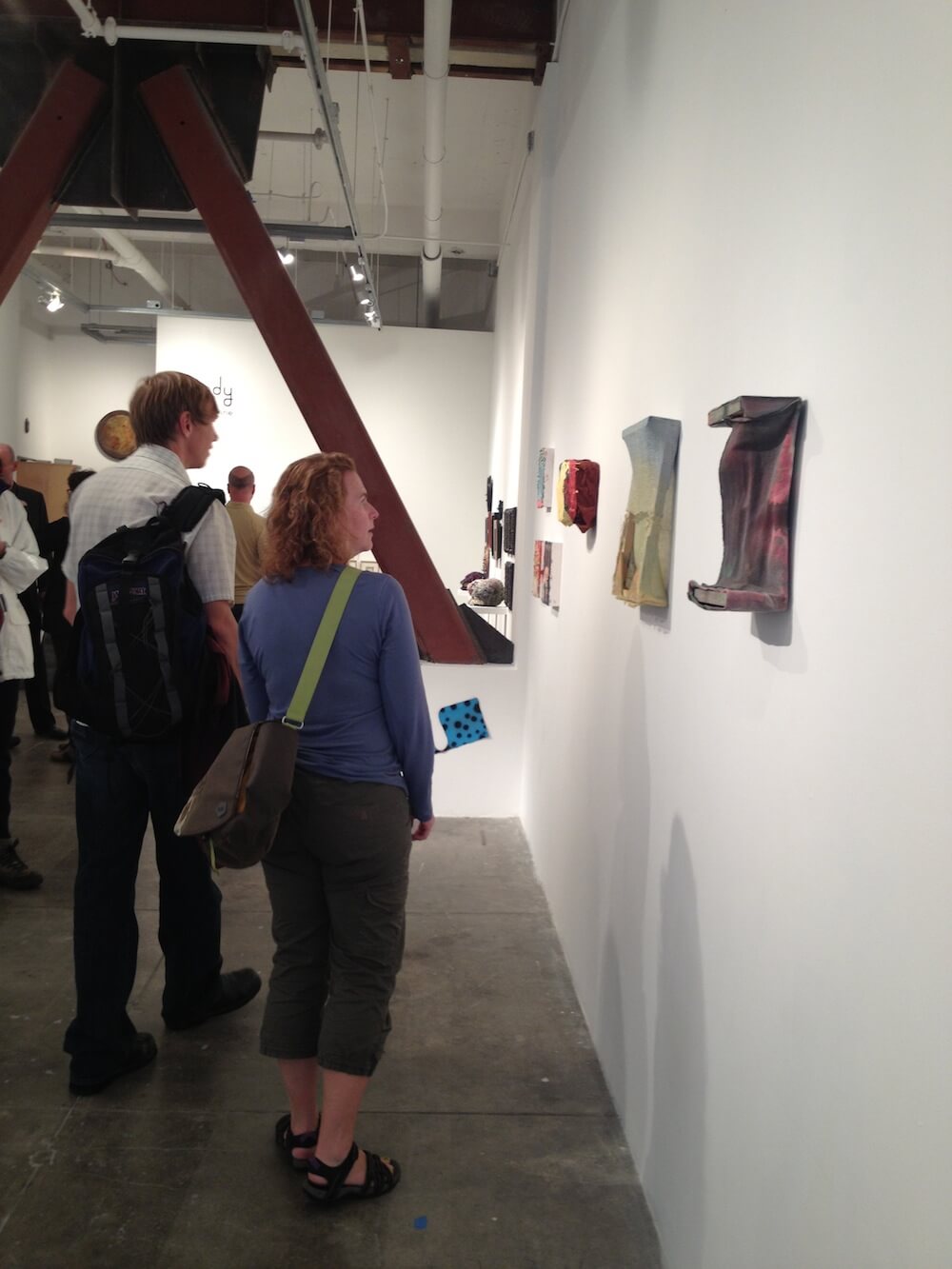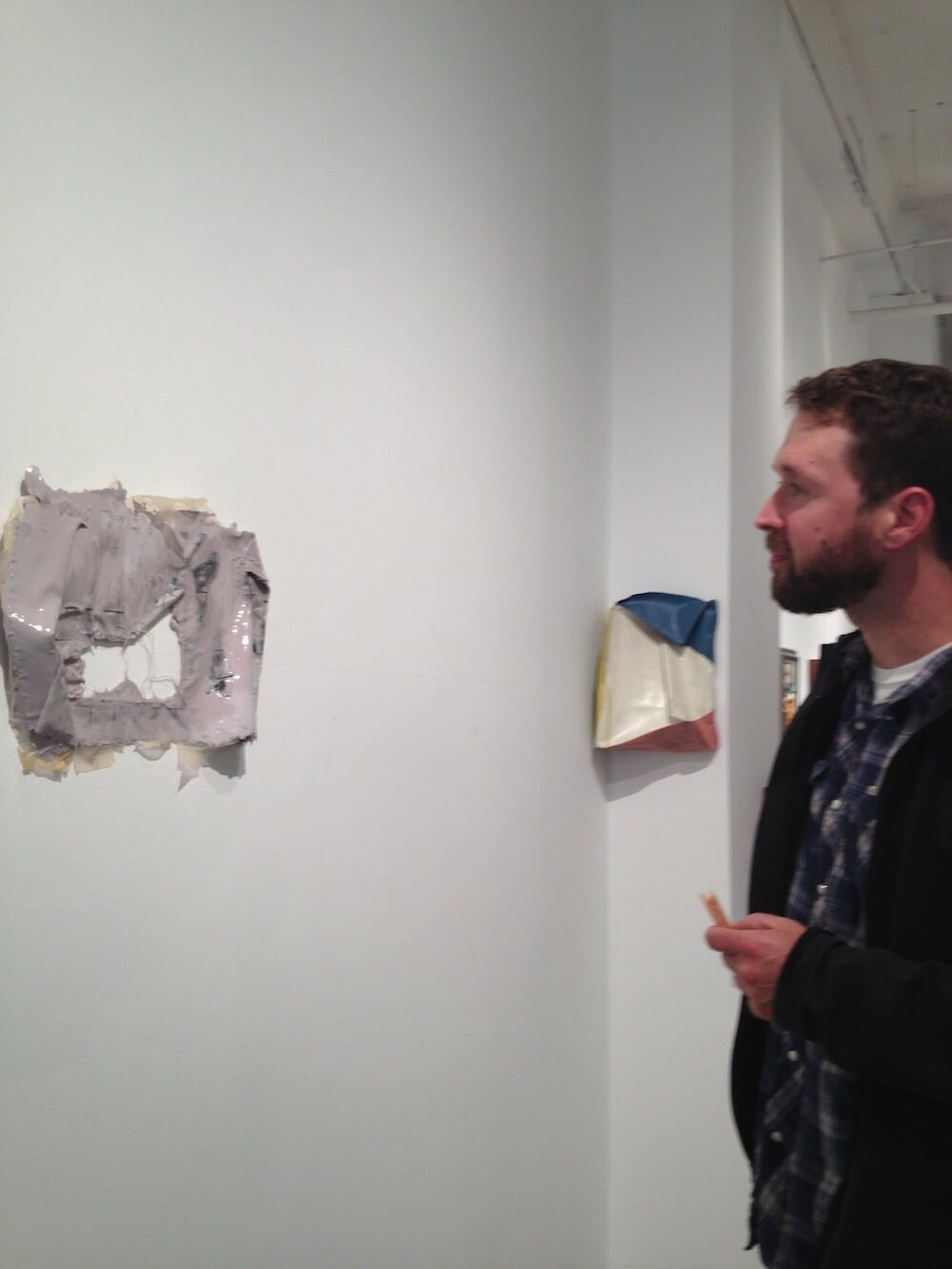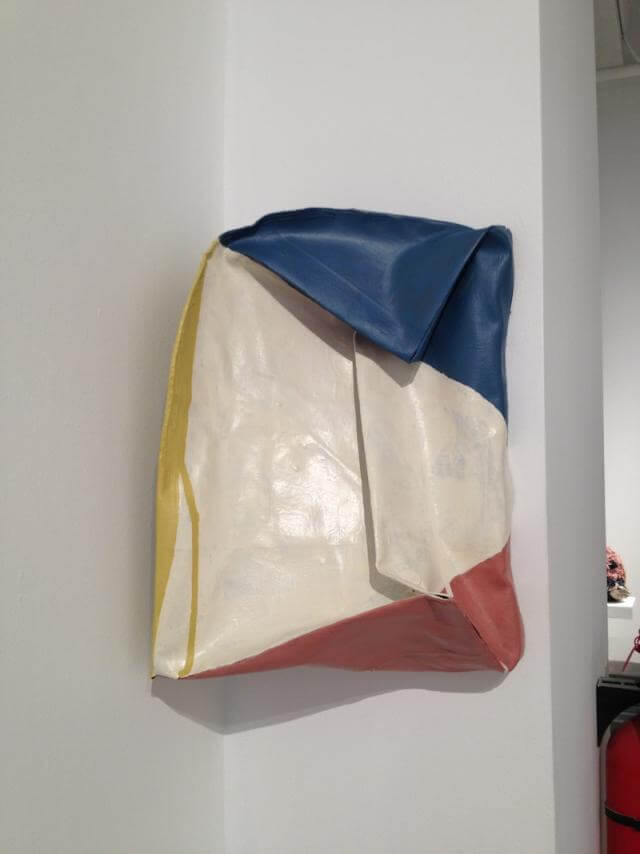The Edge and a Little Beyond
SOIL Gallery, Seattle
September 5 through September 28, 2013
Featuring paintings by Valerie Brennan, Lorri Ott, Jamie Powell, Susan Scott, Julie Torres, and Maria Walker.
Curated by Julie Alexander, the show “brings together six abstract artists whose work pushes out the edge of the painting, playing with the basic structure of wood supports and stretched canvas… The work, verging on sculpture, clearly comes from a painter’s mind. These six artists, through abstraction, both work within and challenge the perimeter of the painting, pushing beyond the boundary and entering the viewer’s space. They do it with a personal mark-making that values joy and uncertainty.” Alexander agreed to discuss curating the exhibition with Painters’ Table. —Brett Baker
Painters’ Table (PT): The exhibition installation feels free and loose, “beyond” traditional alignment and presentation. Was that an intentional nod to the theme of the show or an on-the-spot reaction to how the works interacted with one another and with the space?
Julie Alexander (JA): Both. I knew I wanted to do a modified salon style but as the install progressed it was apparent that some of the work belonged on the edges of the space. It started with Susan Scott’s corner painting titled, Shy Painting. It was one of the first pieces hung. In looking for the right corner, it created a pull across the room that helped form the rest of the installation.
PT: The works all share an affinity for transgressing the traditional rectangular format and an intense engagement with the materiality of painting – the support as well as the paint itself. There is, however, a tremendous variety of touch in these works, the paint is stained, poured, troweled, and brushed. It seems like touch animates the relationships between the works.
JA: That is so true and I’m glad you mention it. In the press release I say that they all engage in “a personal mark-making that values joy and uncertainty.” Beyond wanting to show work that challenged the painting’s edge in a variety of ways, I wanted to show work that I refer to as crude abstraction – work that values personal mark-making, contradiction, and failure. These 6 women, especially Julie Torres and Jamie Powell, also remind me to look for joy.
PT: Each of these works present themselves in three dimensions. Despite the elements of relief in each work, they remain paintings. What, in your opinion, keeps these paintings from becoming sculptures?
JA: That is a complicated question. I could say it is because they each have a painter’s mind which I think is a useful statement since we all paint from our minds (the biology of it, the world view of it). I also think it would be great to try and unpack that thought a bit more; how painting enters “real” space with various transition points. There is the surface of the painting, the edges, the wall, and the “real” space you live and breathe in. These 6 artists each activate the edge and wall in aggressive and aggressively particular ways, bringing the painting into “real” space. But, to remain painters, they each need to be very surface oriented. Lorri Ott, without any support but the pour, creates an object that is clearly about paint and its constructed surface. Maria Walker, very sculptural in Blue Bird, is still very much about paint and surface. Valerie Brennan, who among this group is doing the more traditional rectangle, is a great example of how the edge creates a transition with the surface almost (but not quite) thrust into our “real” space.
PT: As a painter/curator, did the theme of the show come out of concerns in your own work?
JA: The theme for The Edge and a Little Beyond definitely came out of my concerns as a painter. The painting’s edge is where most of my attention eventually goes. If the edge doesn’t work, the painting is dead. It also defines the painting as a three dimensional object in the world and negotiates between the 2 and 3d, the culturalized “magic” place of the 2d painting and the more “real” 3d space of the viewer. I was interested in bringing a group of artist together who explore these transitions in various ways. But the elephant in the room is how the edge contains meaning. The surface may state meaning but the edge holds it. For me, bringing together work that both activates the edge and works within crude abstraction is secretly the start of a discussion on meaning.
